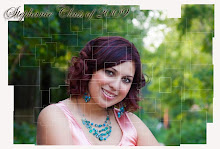Photojournalism Photography
Photojournalism Photography
By TJ Tierney
Did you every pick up a newspaper or a magazine where a single image is used to tell a story. This is known as photojournalism. Photojournalism can fall under all subjects of photography but the image needs to be news worthy to end up being published.
There are two types of photojournalism.
The first type is where an image is used to illustrate a story. Many feature journalists work closely with photographers and commission them to produce images that will be published with their articles. There is no limit to how many images can be used. This is usually the photo editors decision.
The second is where an image is used to tell a story without any words. One single image may be used or as many as ten images are often used in magazines. If you can write - do so; it will be an advantage when you submit some images.
One of the most important qualities of a photojournalist is his ability to react quickly when he comes along a scene that may be news worthy.
Other than the obvious, here is a list of items which may be news worthy.
Impact pictures.
Pictures of the Environment
People.
New buildings.
If you are serious about photojournalism build a collection of images from your area. Many of these pictures will not be immediately news worthy but may be down the road. Take pictures of all the factories and buildings in the area. Some day a factory may close and you may not be able to get to the scene. Also have plenty of pictures of local businessmen and politicians.
Some photojournalists are lucky enough to get assignments from newspapers or magazines, most have to follow or find the news to make a living.
The world of digital photography has made the work of the photojournalist a lot easier. Being able to view, scan and e-mail images to a publisher instantly is a massive advantage.
The work of a photojournalist can be extremely harsh - taking pictures in all kinds of extreme conditions and in very dangerous situations. Many photojournalists die each year in war zones and at different natural disasters around the world.
We live in a world, where today’s news is forgotten tomorrow and the need to get the images quickly to the publisher is so important. If you have images that are news worthy don’t delay sending them to a news agency or publisher. They won’t stay in the news very long.
TJ Tierney is an award winning Irish Landscape photographer and a freelance writer. He frequently writes for the photography directory http://www.goldprints.com and the shopping directory http://www.shop-4us.com To view or buy some of his images visit his on line gallery @ http://www.goldenirishlight.com
Article Source: http://EzineArticles.com/?expert=TJ_Tierney
By TJ Tierney
Did you every pick up a newspaper or a magazine where a single image is used to tell a story. This is known as photojournalism. Photojournalism can fall under all subjects of photography but the image needs to be news worthy to end up being published.
There are two types of photojournalism.
The first type is where an image is used to illustrate a story. Many feature journalists work closely with photographers and commission them to produce images that will be published with their articles. There is no limit to how many images can be used. This is usually the photo editors decision.
The second is where an image is used to tell a story without any words. One single image may be used or as many as ten images are often used in magazines. If you can write - do so; it will be an advantage when you submit some images.
One of the most important qualities of a photojournalist is his ability to react quickly when he comes along a scene that may be news worthy.
Other than the obvious, here is a list of items which may be news worthy.
Impact pictures.
Pictures of the Environment
People.
New buildings.
If you are serious about photojournalism build a collection of images from your area. Many of these pictures will not be immediately news worthy but may be down the road. Take pictures of all the factories and buildings in the area. Some day a factory may close and you may not be able to get to the scene. Also have plenty of pictures of local businessmen and politicians.
Some photojournalists are lucky enough to get assignments from newspapers or magazines, most have to follow or find the news to make a living.
The world of digital photography has made the work of the photojournalist a lot easier. Being able to view, scan and e-mail images to a publisher instantly is a massive advantage.
The work of a photojournalist can be extremely harsh - taking pictures in all kinds of extreme conditions and in very dangerous situations. Many photojournalists die each year in war zones and at different natural disasters around the world.
We live in a world, where today’s news is forgotten tomorrow and the need to get the images quickly to the publisher is so important. If you have images that are news worthy don’t delay sending them to a news agency or publisher. They won’t stay in the news very long.
TJ Tierney is an award winning Irish Landscape photographer and a freelance writer. He frequently writes for the photography directory http://www.goldprints.com and the shopping directory http://www.shop-4us.com To view or buy some of his images visit his on line gallery @ http://www.goldenirishlight.com
Article Source: http://EzineArticles.com/?expert=TJ_Tierney


